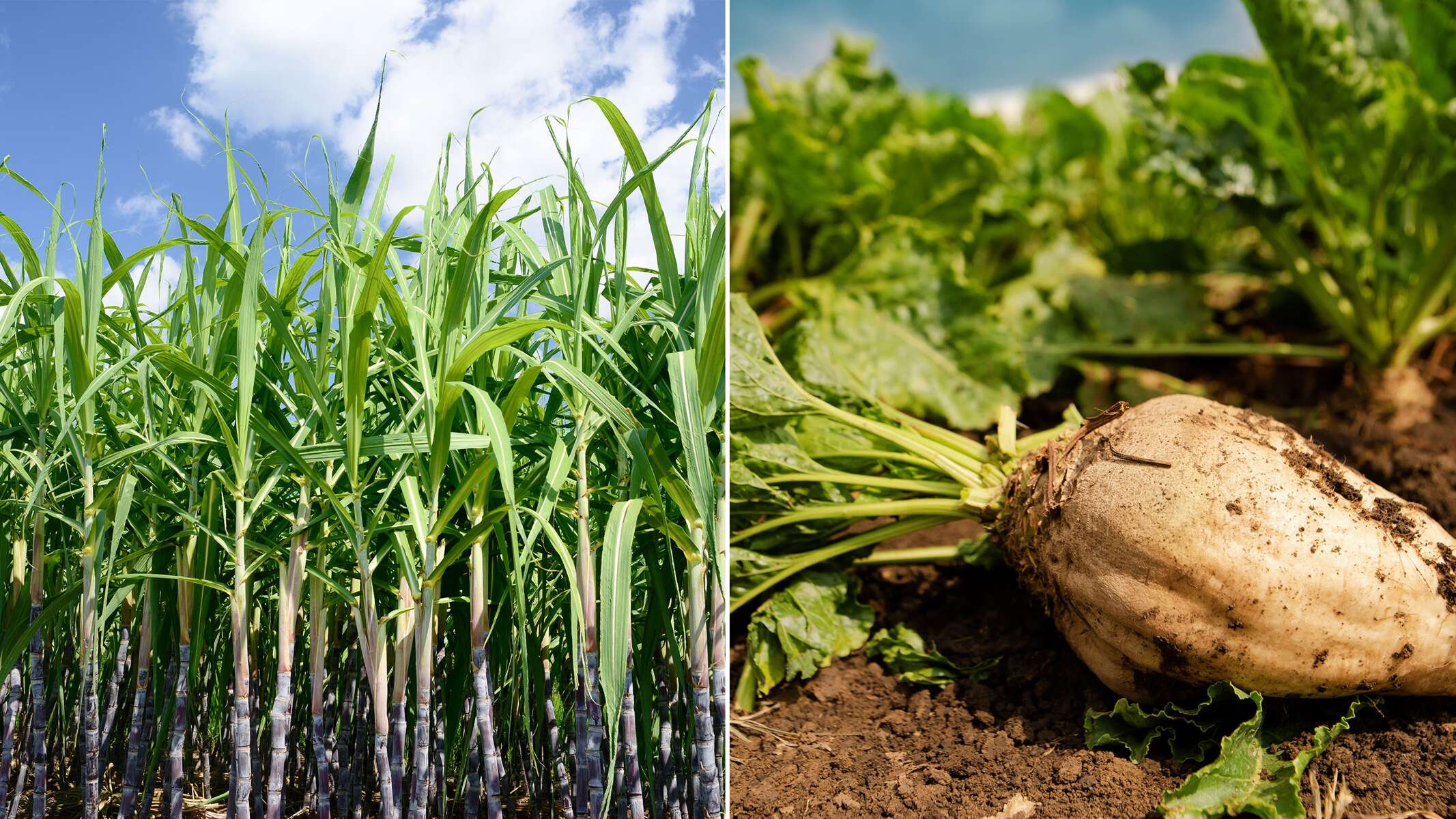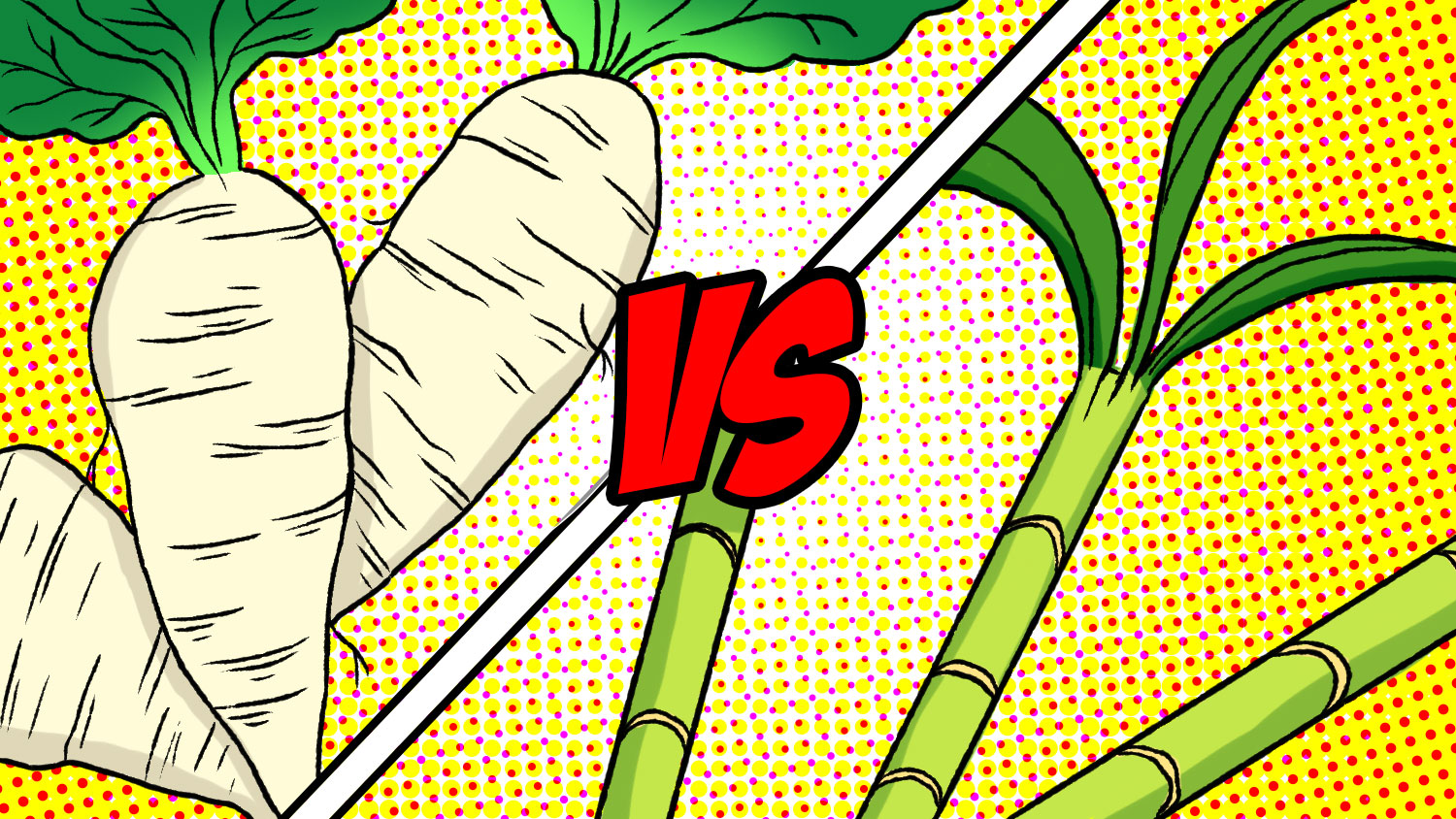Sugar beet vs sugar cane: The ultimate overview to applications and processing methods
Everything About Sugar Beet Vs Sugar Cane: Which One Uses Greater Perks and Uses?
The contrast between sugar beet and sugar cane provides a nuanced exploration of their respective advantages and applications. Each crop has distinct dietary profiles and expanding conditions that affect their usage in various markets. As consumer preferences shift towards much healthier choices, the significance of these two sources of sugar becomes increasingly significant. Recognizing their distinctions can disclose insights into which may inevitably serve much better in a changing market landscape. What variables will shape this recurring argument?
Introduction of Sugar Beet and Sugar Cane
Sugar beet and sugar cane are 2 main resources of sugar, each with distinctive characteristics and advantages. Sugar beet, an origin plant largely grown in pleasant climates, is known for its high sucrose material, which can range from 15% to 20%. This crop is usually processed into granulated sugar, molasses, and various other results. Its farming enables a shorter expanding season and much less reliance on exotic climates.
In contrast, sugar cane thrives in warmer, exotic regions and is usually concerned for its fibrous stalks, which can generate 10% to 15% sucrose. The processing of sugar cane not just produces sugar yet additionally causes items like rum and ethanol, making it functional. Both plants add substantially to the global sugar market, with their one-of-a-kind growing conditions and processing methods influencing their agricultural and financial value. Inevitably, the option between sugar beet and sugar cane typically depends on local environments and market needs.
Nutritional Profiles: Sugar Beet Vs Sugar Cane
The nutritional accounts of sugar beet and sugar cane disclose significant distinctions in their nutrient make-ups. Sugar beet has a tendency to supply a higher focus of minerals and vitamins, while sugar cane mostly gives energy in the kind of carbohydrates. Additionally, the glycemic index of these two sources varies, influencing their impacts on blood glucose degrees.
Nutrient Make-up Comparison
When comparing the nutrient composition of sugar beet and sugar cane, distinctive differences emerge that can affect nutritional selections. Sugar beets are recognized for their greater fiber web content, providing around 2 grams of fiber per 100 grams, while sugar cane has minimal fiber (Sugar beet vs sugar cane). Regarding vitamins, sugar beetroots use a series of B vitamins, specifically folate, which sustains mobile health and wellness, whereas sugar cane includes fewer vitamins generally. Furthermore, sugar beets flaunt a higher mineral web content, consisting of potassium and magnesium, vital for different bodily features. Sugar cane largely gives carbohydrates, especially sucrose, but lacks the nutrient thickness found in sugar beetroots. These distinctions highlight the dietary advantages of sugar beetroots compared to sugar cane in a balanced diet

Glycemic Index Differences
Exactly how do sugar beets and sugar cane differ in their glycemic index, and what effects does this have for people checking their blood sugar level degrees? Sugar beets generally have a reduced glycemic index (GI) contrasted to sugar cane, which implies they trigger a slower and a lot more progressive increase in blood sugar levels. This distinction is specifically vital for people with diabetes mellitus or those worried concerning blood sugar management. A reduced GI food can help maintain steadier energy degrees and decrease the threat of insulin spikes. While both resources are primarily made up of sucrose, the differing fiber and nutrient web content in sugar beets might add to their reduced GI, making them a possibly better option for health-conscious consumers.
Expanding Problems and Geographic Distribution
Although both sugar beet and sugar cane offer as crucial resources of sugar, their growing conditions and geographical circulation vary substantially. Sugar cane prospers in exotic and subtropical climates, requiring warm temperatures, bountiful sunlight, and considerable rains. It is mainly grown in countries such as Brazil, India, and China, where these ecological elements are optimal. Sugar beet vs sugar cane. In comparison, sugar beet chooses temperate climates, flourishing in cooler areas with well-drained soil. Significant producers of sugar beet include the USA, Russia, and numerous European nations, where the expanding period lines up with cooler temperature levels
The distinctions in climate needs cause differing growing practices; sugar cane is frequently grown as a seasonal crop, while sugar beet is generally planted annually. This geographical difference not just affects regional farming economic climates however additionally forms regional methods associated with sugar production and processing. Understanding these factors is vital for assessing the benefits and applications of each source.
Ecological Impact of Sugar Beet and Sugar Cane Production
While both sugar beet and sugar cane add substantially to global sugar manufacturing, their ecological impacts vary significantly. Sugar cane farming typically requires large areas of land and water, resulting in deforestation and habitat loss in you can find out more some areas. Additionally, making use of fertilizers and chemicals in sugar cane farming can lead to dirt destruction and water pollution. Alternatively, sugar beet is usually expanded in cooler climates and requires much less water, which might lower the pressure on neighborhood water sources. Extensive farming methods associated with sugar beet can additionally lead to dirt erosion and nutrient exhaustion. The handling of both plants generates waste, however sugar cane has a greater possibility for by-products, such as bioenergy, which can mitigate some ecological influences. Inevitably, the sustainability of each plant greatly depends on farming methods and regional administration methods used throughout the manufacturing cycle.

Processing Techniques and Effectiveness
Processing approaches for sugar beet and sugar cane differ noticeably, impacting general effectiveness and yield. Sugar beetroots undergo a procedure that consists of washing, cutting, and removing juice through diffusion or pressing. The juice is then purified, concentrated, and crystallized, resulting in granulated sugar. This method is normally effective, with a high sugar extraction price.
On the other hand, sugar cane processing entails squashing the cane to extract juice, adhered to by explanation and dissipation. The juice is after that steamed to produce sugar crystals. While both approaches are effective, sugar cane processing can be more labor-intensive and taxing as a result of the bigger range of procedures and the requirement for much more substantial tools.
Sugar beet handling usually results in a higher sugar web content per lot compared to sugar cane, making it a much more reliable choice in specific areas. In general, the choice of processing technique impacts not just the yield yet likewise the financial feasibility of sugar manufacturing.
Applications in the Food Industry
In the food market, sugar beet and sugar cane serve distinctive functions in sweetener manufacturing. Each resource provides distinct qualities that affect their culinary applications, from baked items to beverages. Understanding these differences can assist producers and chefs in selecting one of the most appropriate component for their demands.
Sugar Production Differences
Although both sugar beet and sugar cane act as vital resources for sugar manufacturing, their read this applications in the food market vary substantially. Sugar cane is largely related to creating raw sugar and molasses, which are extensively made use of in drinks, confections, and baked products. Its juice is likewise fermented to create rum. Alternatively, sugar beet is mainly refined right into polished sugar, which is favored in the production of granulated sugar and various other sugar. The removal procedure for sugar beet is more straightforward, enabling greater yields of white sugar. In addition, sugar beet's versatility enables the production of alternative sweeteners, such as beet syrup. These distinctions highlight the distinct functions each source plays in meeting the diverse demands of the food market.
Culinary Utilizes Comparison
Cooking applications of sugar beet and sugar cane expose distinctive choices among chefs and food producers. Sugar cane, this content commonly perceived as the traditional sweetener, is favored in a selection of products, including syrups, molasses, and drinks like rum. Its all-natural taste matches desserts, marinades, and sauces. Alternatively, sugar beet, made use of mostly in granulated sugar type, is often included right into baked items, candies, and refined foods. Its neutral taste profile enables it to blend seamlessly into different dishes. In addition, sugar beet is gaining grip in natural and non-GMO markets, appealing to health-conscious consumers. Ultimately, the option between sugar beet and sugar cane pivots on specific culinary applications, flavor choices, and market trends within the food industry.
Wellness Considerations and Customer Preferences
An expanding number of consumers are increasingly conscious of the health and wellness implications connected with sugar sources, resulting in an eager passion in the benefits of sugar beet versus sugar cane. Both sugar sources have unique dietary profiles that might affect customer options. Sugar beets have a tendency to include somewhat a lot more fiber and crucial nutrients, which can attract health-conscious individuals. Conversely, sugar cane is often perceived as a much more natural and much less processed choice, potentially attracting those looking for natural or raw items.
The increasing appeal of different sweeteners has prompted customers to scrutinize standard sugars more carefully (Sugar beet vs sugar cane). Understanding of extreme sugar intake's health and wellness threats, such as obesity and diabetes, has fueled a demand for transparency concerning the origins and handling approaches of sweeteners. Ultimately, specific preferences remain to form the debate in between sugar beet and sugar cane, mirroring a broader fad in the direction of much healthier consuming habits and notified consumerism
Frequently Asked Inquiries
What Are the Historical Uses Sugar Beet and Sugar Cane?
Historically, sugar beet and sugar cane have actually worked as primary resources of sugar. Sugar cane, grown for centuries in tropical areas, provided sweeteners, while sugar beet arised in Europe during the 18th century, enhancing neighborhood sugar manufacturing.

Just How Do Sugar Beet and Cane Affect Citizen Economies?
Sugar beet and sugar cane considerably influence neighborhood economic situations with task development, agricultural productivity, and trade. Their farming cultivates rural growth, supports local services, and produces tax obligation earnings, ultimately enhancing neighborhood sustainability and financial strength.
Are There Any Kind Of Social Value Distinctions In Between Sugar Beet and Cane?
Social importance differs between sugar beet and sugar cane. Sugar cane usually represents exotic heritage and conventional methods, while sugar beet is connected with agricultural technology and industrialization, mirroring different regional identifications and historic contexts in their manufacturing.
What Are the Main Pests Affecting Sugar Beet and Sugar Cane?
The main insects affecting sugar beet include aphids and root maggots, while sugar cane deals with risks from borers and planthoppers. Both crops need careful monitoring to mitigate damage and assurance healthy and balanced yields.
How Do Environment Adjustments Effect Sugar Beet and Sugar Cane Growing?
Environment modifications considerably influence sugar beet and sugar cane cultivation by modifying development conditions, moving parasite populations, and influencing water availability. These elements can lower yields and affect general farming sustainability in affected regions.